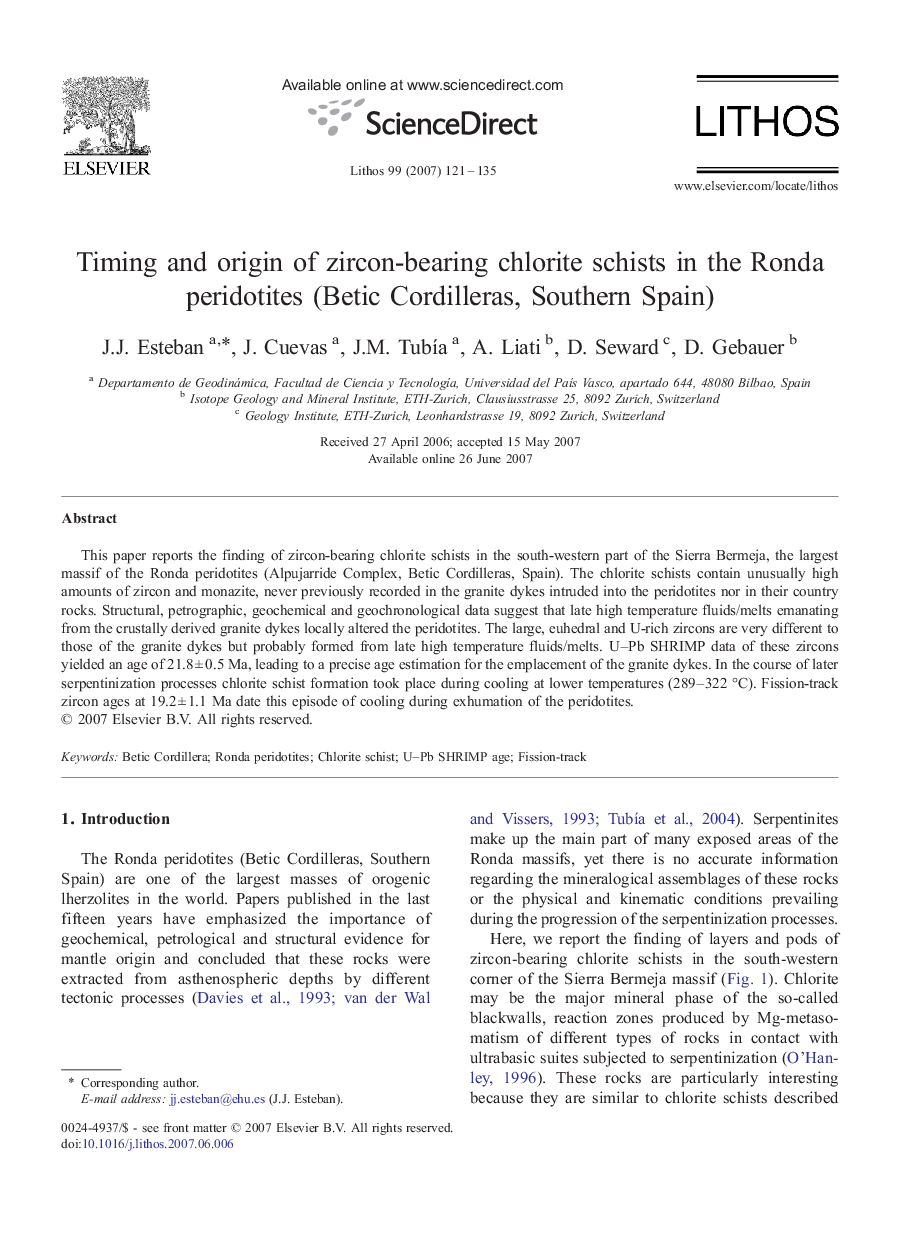| Article ID | Journal | Published Year | Pages | File Type |
|---|---|---|---|---|
| 4717688 | Lithos | 2007 | 15 Pages |
This paper reports the finding of zircon-bearing chlorite schists in the south-western part of the Sierra Bermeja, the largest massif of the Ronda peridotites (Alpujarride Complex, Betic Cordilleras, Spain). The chlorite schists contain unusually high amounts of zircon and monazite, never previously recorded in the granite dykes intruded into the peridotites nor in their country rocks. Structural, petrographic, geochemical and geochronological data suggest that late high temperature fluids/melts emanating from the crustally derived granite dykes locally altered the peridotites. The large, euhedral and U-rich zircons are very different to those of the granite dykes but probably formed from late high temperature fluids/melts. U–Pb SHRIMP data of these zircons yielded an age of 21.8 ± 0.5 Ma, leading to a precise age estimation for the emplacement of the granite dykes. In the course of later serpentinization processes chlorite schist formation took place during cooling at lower temperatures (289–322 °C). Fission-track zircon ages at 19.2 ± 1.1 Ma date this episode of cooling during exhumation of the peridotites.
